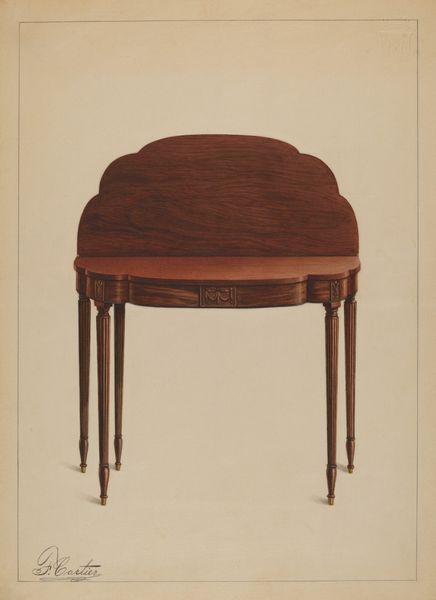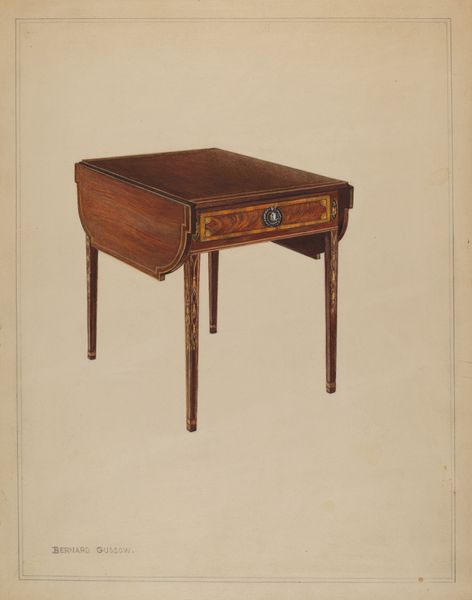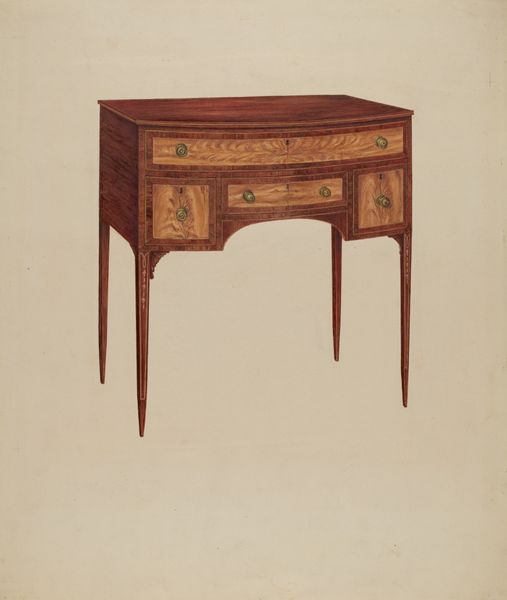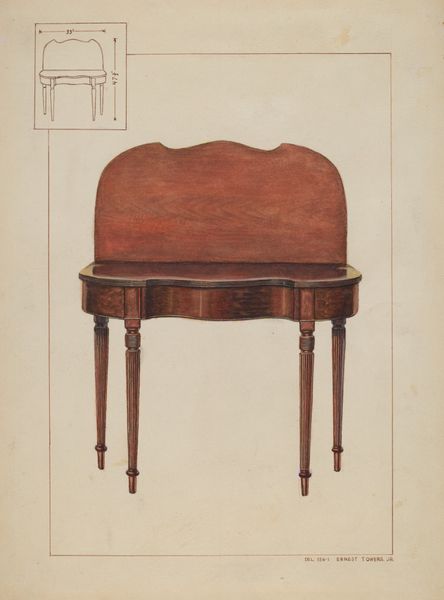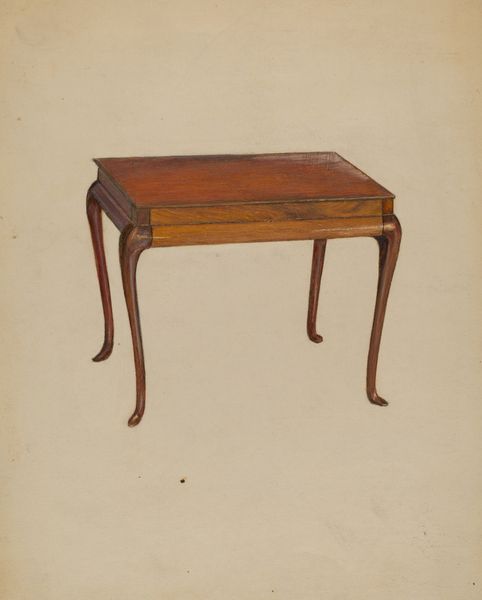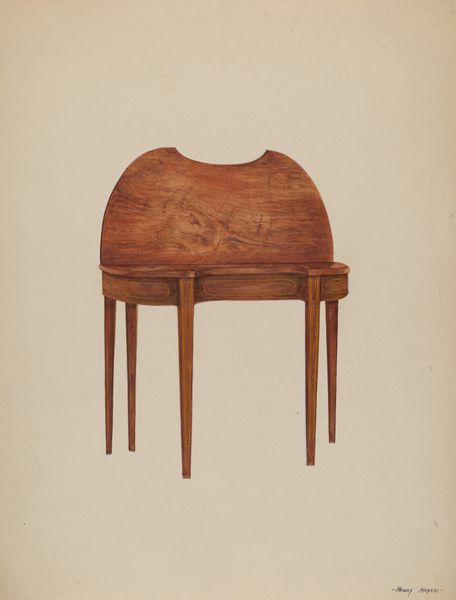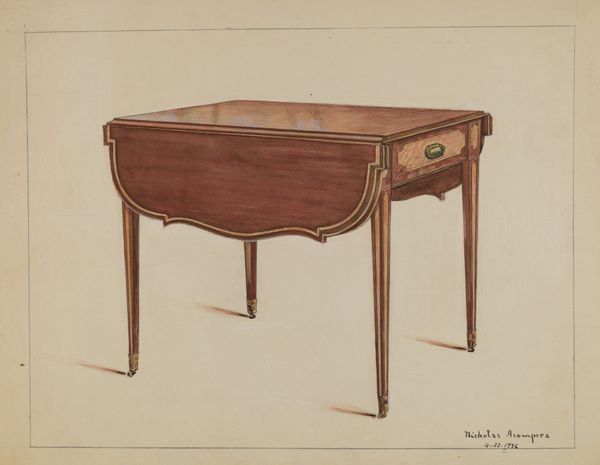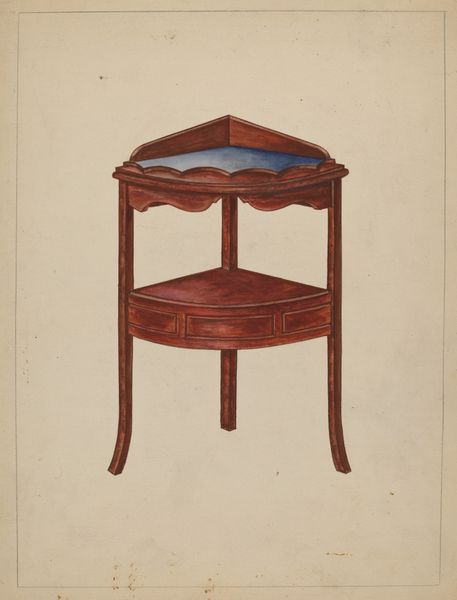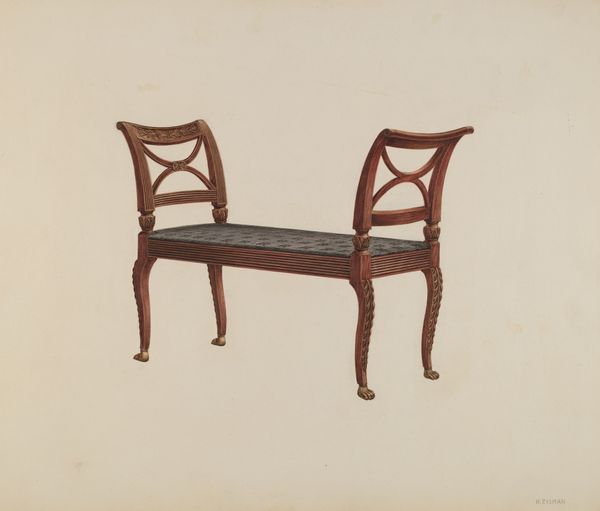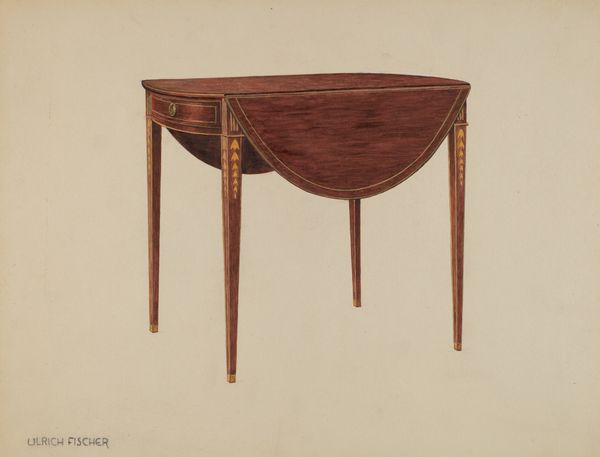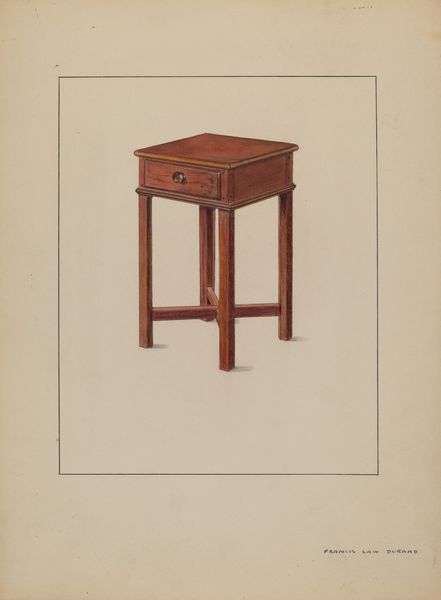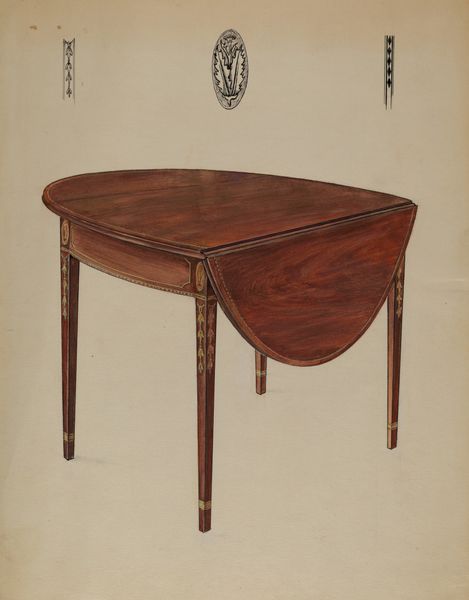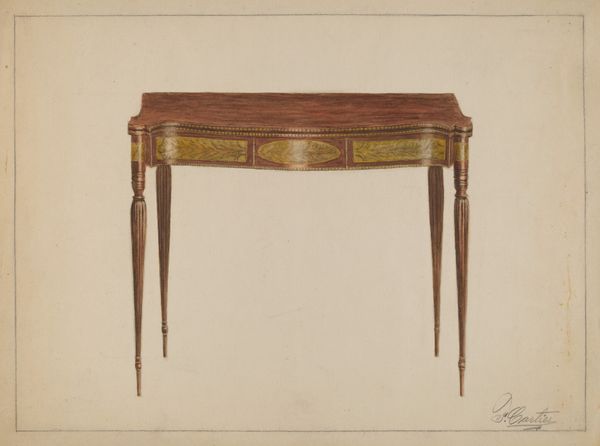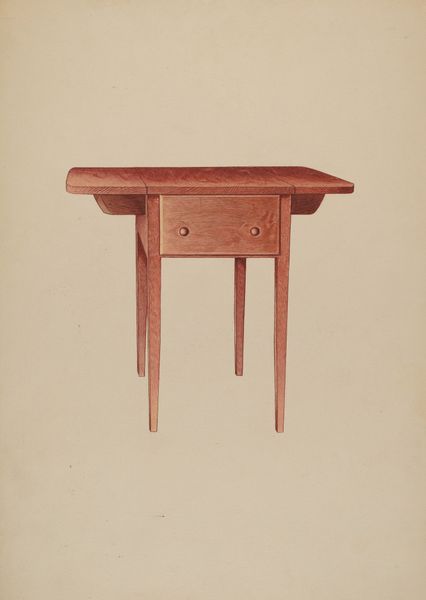
drawing, coloured-pencil
#
drawing
#
coloured-pencil
#
water colours
#
coloured pencil
Dimensions: overall: 30.3 x 22.7 cm (11 15/16 x 8 15/16 in.) Original IAD Object: 20"high; 36"diameter at fold; depth of folded top 18"
Copyright: National Gallery of Art: CC0 1.0
Curator: Here we have Harry Eisman's "Card Table," circa 1937, rendered in colored pencil. Editor: I'm immediately struck by its simplicity. There's a quiet elegance in the form, a visual paring down to essentials. The semi-circular shape creates a pleasing, almost classical balance, don't you think? Curator: Certainly. And given that it was created in the late 1930s, it is interesting to consider the context, a period defined by both economic depression and burgeoning international tension. These tensions existed alongside a culture of card playing and games as ways to create community. Editor: I notice the meticulous detailing on the table's surface and the legs. The artist seems to have focused on capturing the qualities of light playing across the wood grain. Note how the shading defines the form. What I see here is more than a table. The form takes on an almost sculptural presence. Curator: The card table occupies a specific position in social history. Games, particularly cards, were associated with domestic leisure and social gatherings. One has to ask what sort of gatherings this particular card table would host. Were they innocent or illicit? Friendly or adversarial? Who was included in the space of the game, and who was excluded? Editor: You raise interesting questions about the narrative. I am compelled by the cool restraint and clarity with which the artist constructed this image, focusing our eye on the subtle interplay of line and texture to communicate its physical form. The rendering suggests functionality and refined taste of this simple furnishing. Curator: By understanding the social context surrounding its creation, we can go beyond the artwork's physical components. Its existence touches on themes of economic hardship, gendered social spheres, class dynamics, leisure time, and, above all, the sense of collective escapism so prevalent during this period. Editor: Considering those external factors offers insights beyond the compositional elements. Thanks to our conversation, I am able to enrich my understanding of this very evocative study of interiority. Curator: Precisely. Together, these approaches enrich our comprehension, illustrating how context and composition combine to tell layered, complex narratives.
Comments
No comments
Be the first to comment and join the conversation on the ultimate creative platform.
